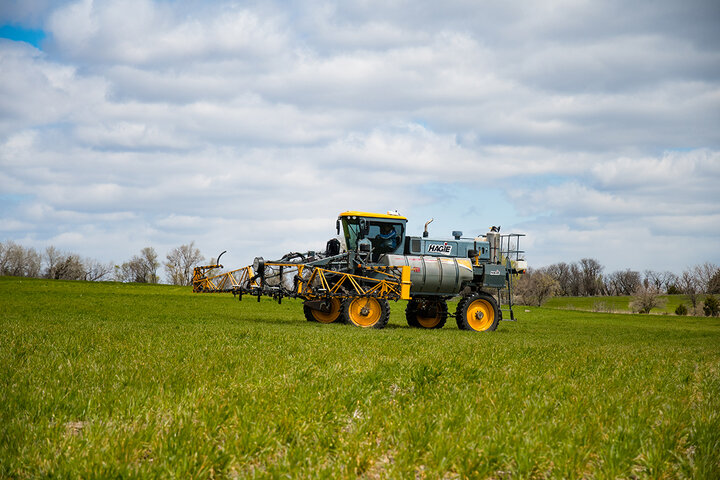Nitrogen management is always something that producers are looking to improve. Monte Murkle is putting in the work with Nebraska On-Farm Research to do just that.
This year, Murkle used satellite imagery with the NinjaAg platform to recommend nitrogen need for winter wheat. The imagery was used to guide where in the field to apply more or less nitrogen to meet the needs of the crop. Murkle compared the imagery approach to his traditional, flat-rate nitrogen management.
Murkle’s Operation
Murkle started farming in 1983 and then was able to buy his own operation in 2000. He produces corn, soybeans, wheat and sometimes will throw alfalfa into the mix. The field on which the study was performed had previously been in the Conservation Reserve Program (CRP).
This wasn’t Murkle’s first time working with on-farm research as last year he did a nitrogen trial with Ag Leader OptRx® crop canopy sensors. When his local extension educator approached him wanting to do a test plot with on-farm research, Murkle was more than willing to try this research in his own field.
“I have always wondered if I was putting enough nitrogen on my fields and through this study, I found that I was shorting in some areas,” Murkle said.
They found that there are some areas of the field that need more nitrogen and others need less nitrogen. So, by using this sensor-based management system, producers might be better able to adapt to the diversity within the field.

Nitrogen Management Study
His trial last year used a sensor-based approach, which was not part of Murkle’s regular practice. Right now, a sensor-based approach might be out of reach for some producers, but as time goes on, Murkle predicts that it will get cheaper, and we might see this in regular practice.
Three sets of nitrogen rate blocks were established using a variable-rate prescription. Within each block, four of the rates were applied ranging from 22-122 lb N/acre. These rates were used to determine the observed economic optimum nitrogen rate. Maps were used to evaluate the accuracy of application, and yield monitor data was used to analyze the differences between each rate.
Overall, there was not a significant difference between the grower’s treatment and the sensor-based approach when looking at yield, nitrogen use efficiency and partial profit.
Taking the Results and Looking to the Future
Murkle said that he was not surprised that he was shorting some of the spots in the field, but it was interesting to see the highs and lows throughout the field, thanks to the sensor-based approach. If he was to do it again, we would like to see how the results would be over multiple years and how different operators saw results.
On-farm research helped Murkle not only with his wheat field management, but he can use this data across different fields. He also is able to do his own trials to see what works best for his operation. He does say that there is a little more involvement with doing a study, however, it is manageable and the research fits into what you are already doing for the most part. Murkle feels grateful for the university as they take an interest in helping producers.
“This is a real-world study which helps get better data and it is more trusted by operators,” Murkle said.
Contact a member of the team to get started with a Nebraska On-Farm Research study of your own!
The Nebraska On-Farm Research Network is a collaborative partnership that includes Nebraska Extension, the Nebraska Corn Board, the Nebraska Corn Growers Association, the Nebraska Soybean Checkoff and the Nebraska Dry Bean Commission.
This study is part of the Precision Nitrogen Management On-Farm Research Project, which is funded by a USDA-NRCS On-Farm Trials Conservation Innovation Grant.

